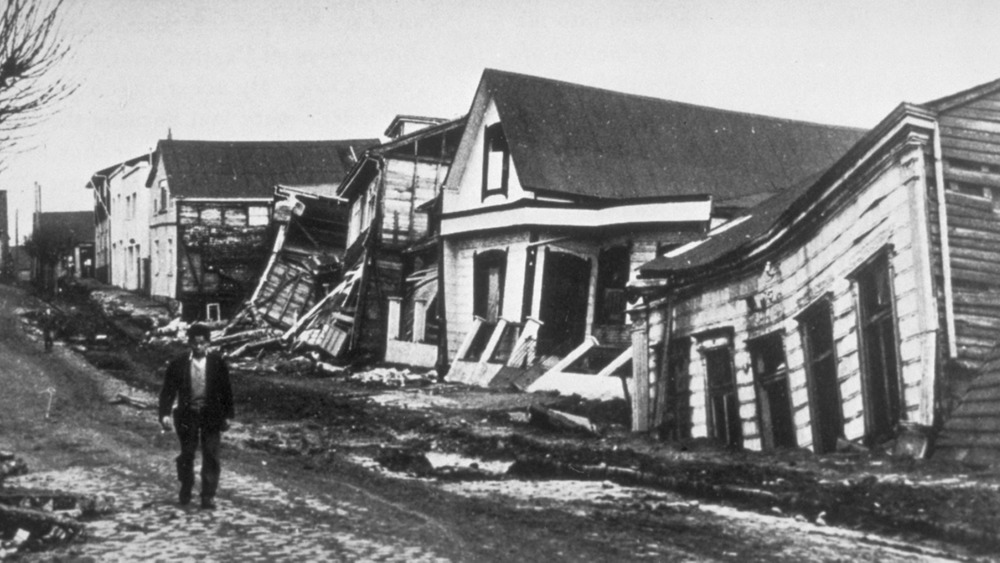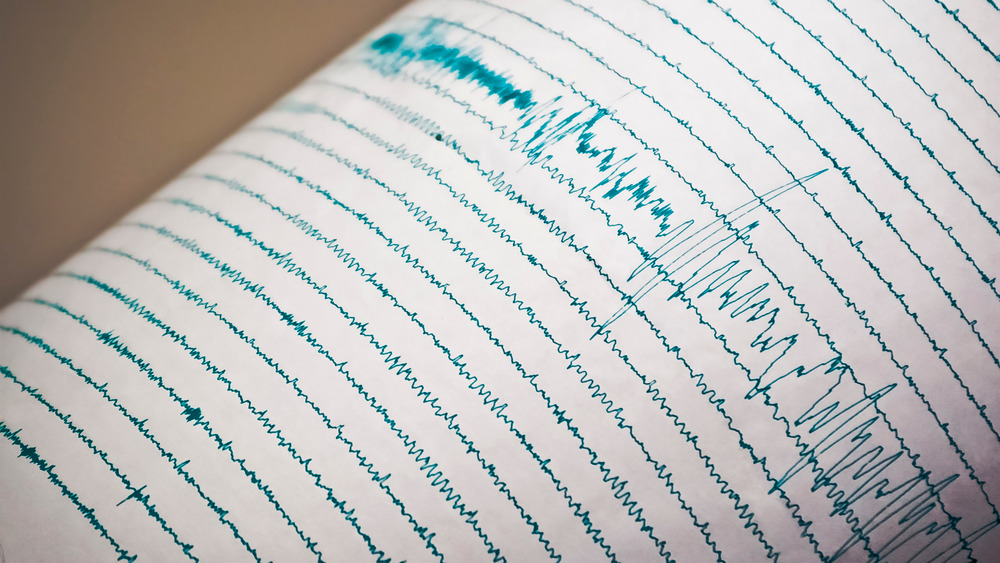This Is The Most Powerful Earthquake Ever Recorded
According to the U.S. Geological Survey (USGS), earthquakes are measured according to their magnitude, which is "related to the length of the fault on which it occurs. That is, the longer the fault, the larger the earthquake." The site goes on to elaborate that this physical size of an earthquake is measured by calculating length by width by slip. For very large earthquakes, however, the magnitude can be inaccurate in terms of describing the size, so modern measurements tend to describe the physical effects of the earthquake.
The USGS reports that while earthquakes with a magnitude of 10 can't happen, because the necessary fault would have to go around a good portion of the earth. The largest earthquake ever recorded, however, had a magnitude of 9.5 and a fault nearly 1,000 miles long. It took place on May 22, 1960 in Valdivia, Chile. Its numbers are shocking: 1,655 people were killed; 3,000 were injured; 2 million were left homeless, and there were totals of $550 million in damages in southern Chile.
Of the 1,655 people who died, several of them lived outside of Chile and were killed by tsunamis resulting from the earthquake, including 61 people in Hawaii, 138 people in Japan, and 32 people in the Philippines. Hawaii endured $75 million in damages, Japan a total of $50 million, and the United States' west coast was left with damages totaling $500,000.
The most powerful earthquake wasn't the deadliest earthquake
While the Valdivia earthquake is considered the most powerful earthquake ever recorded, it is not the first- or even second-deadliest earthquake in history, despite its high international death toll. Per History, the earthquake that caused the most fatalities struck China in 1556 CE in the provinces of Shaanxi and Shanxi. An estimated 830,000 people died in what has come to be known as the Jiajing Great Earthquake. Local record-keeping showed that people historically tracked many other earthquakes in the area, but the Jiajing earthquake's description differs from the others', noting "leveled mountains, floods, fires that burned for days, and a drastically altered landscape" as well as estimated losses of population in some areas totaling 60 percent.
The second-deadliest earthquake involved additional deaths and damage due to resulting tsunamis. It took place in India and the Indian Ocean in 2004. Over 230,000 people in Indonesia, Thailand, Sri Lanka, and India died, and the earthquake's magnitude nearly reached that of the Valdivia earthquake, measuring at 9.3.
The Jiajing earthquake is estimated to have had a lower magnitude of between 8.0 and 8.3. Its more deadly outcomes were due to the area's dense population and poorly constructed stone buildings. Survivors of the Jiajing earthquake responded by rebuilding using softer materials, such as bamboo and wood that could better resist earthquakes and cause less damage upon falling.

